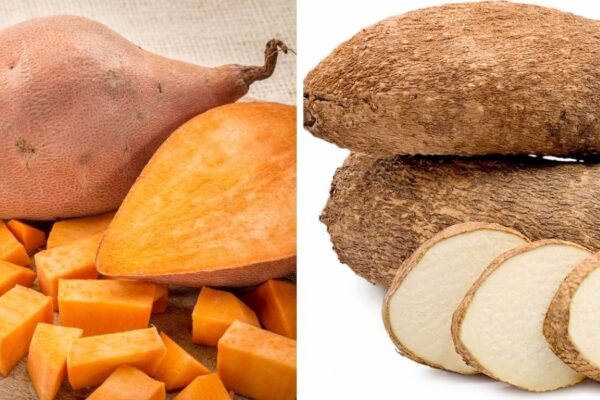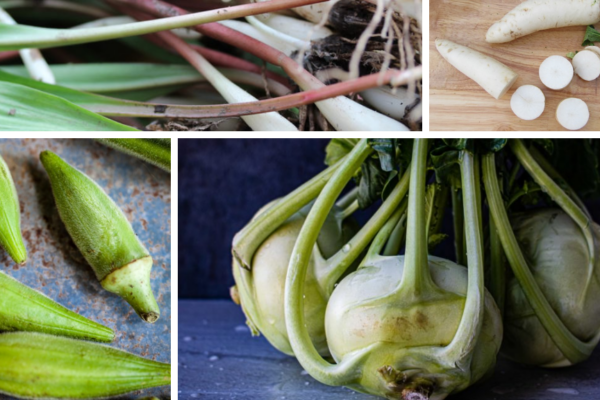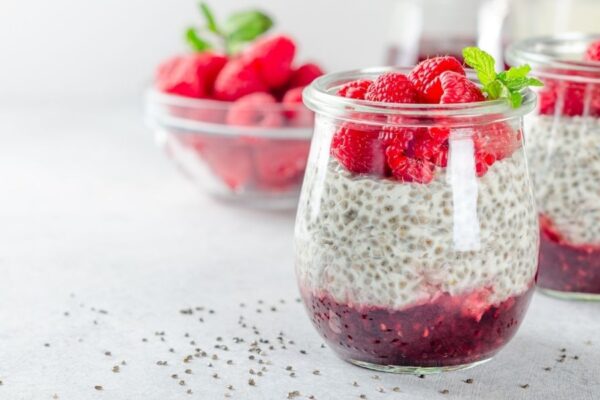Culinary Nutrition Guide to Root Vegetables
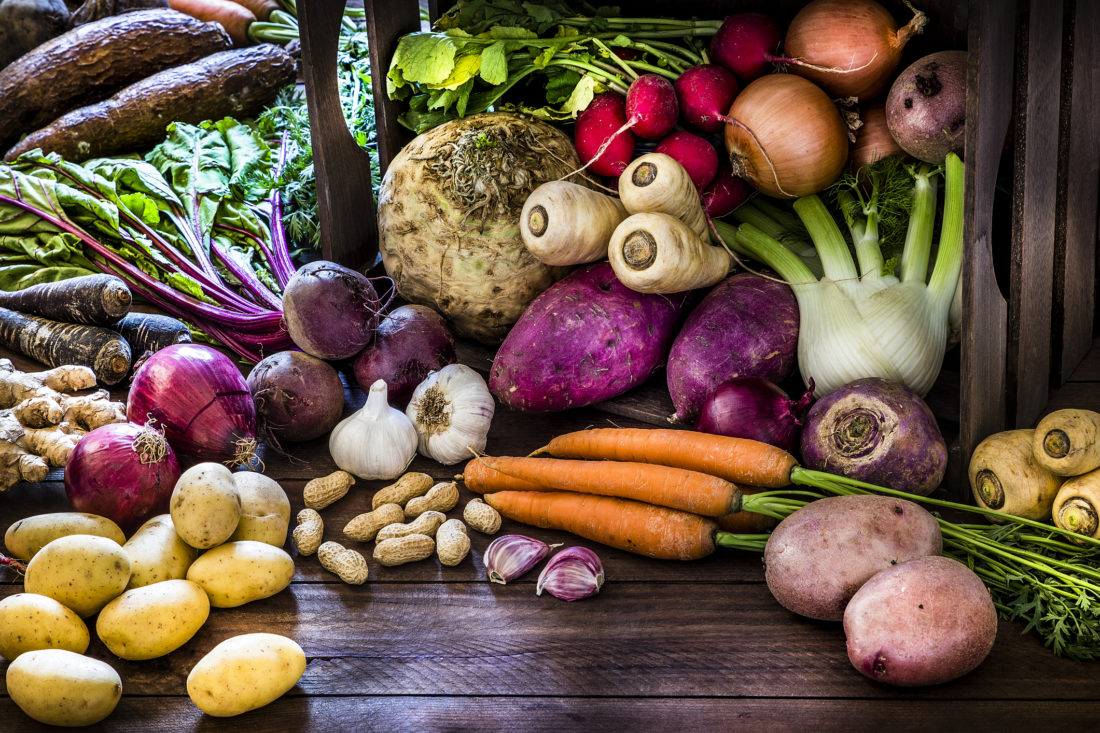
Root vegetables are a family of strong, hardy plants that grow in the ground. They’re typically sweet and starchy, which makes them a very delicious ingredient in all types of recipes – especially those cozy comfort foods we all know and love (we’re looking at you, baked sweet potato fries). Fortunately, root vegetables are also very nutritious because they contain phytochemicals that protect them from the challenging environment underneath the earth. When we consume these roots, we also receive this protection: it’s like eating your own defense shield! In this guide to root vegetables, you’ll learn the full scoop about this fantastic veggie family and loads of inspiration for how you can use them in your diet.
Culinary Nutrition Benefits of Root Vegetables
Root vegetables are rich in:
- Fibre: Important for balancing blood sugar levels, improving digestion and reducing constipation, lowering cholesterol and boosting satiety.
- Antioxidants: Dampen the production of free radicals and protect our bodies from damage.
- Complex Carbohydrates: Some complain about root vegetables being too sweet and starchy. Yes, some of them are sweet – but the effects of that sweetness is mitigated by their high amount of fibre, as well as their content of vitamins and minerals. You can also offset any potential rise in blood sugar by pairing them with nutritious fats and good quality protein sources.
- Vitamins A + C: Vitamin A supports immunity, vision, inflammation and tissue healing, while Vitamin C helps to fight the common cold, support collagen production, boost immunity and reduce inflammation.
- B Vitamins: Helps with energy levels and nourishes the nervous system.
- Anti-Inflammatory Nutrients: Root vegetables contain a variety of anti-inflammatory compounds that prevent or address inflammation in the body.
How to Use Root Vegetables
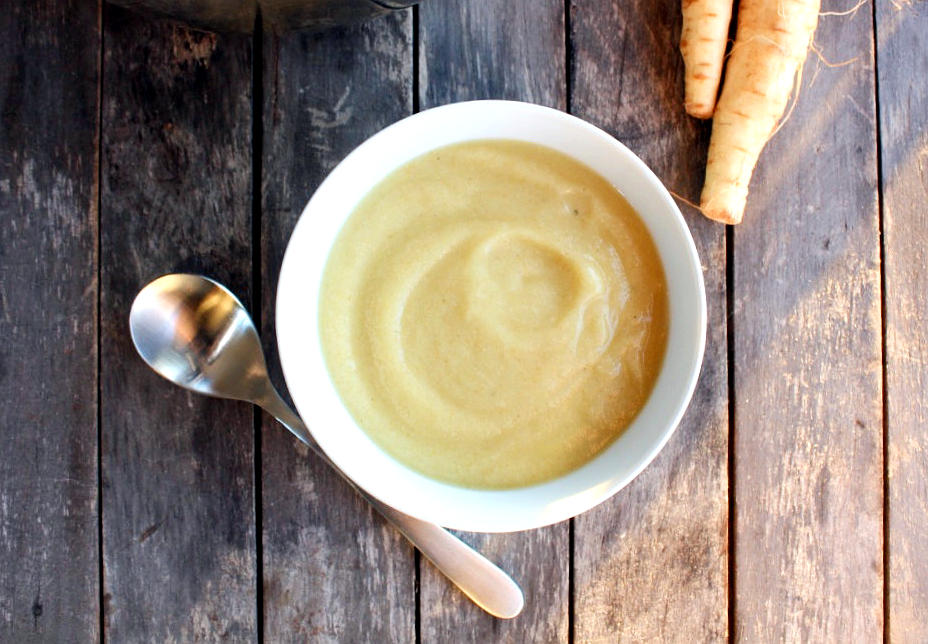
Root vegetables can be enjoyed in a variety of ways! They are wonderful roasted, baked, grilled, steamed or mashed, and can be incorporated in a variety of recipes including:
- Soups – leave them chunky, or blend until smooth
- Dips and Hummus – puréed root vegetables make for a thicker texture and flavour to hummus, dressings, dips and more
- Homemade Sauces – puréed root vegetables add extra oomph and nutrition to sauces
- Burgers, Meatballs and Patties – use a root vegetable purée, or grate them for texture
- Baked Goods – use the purée or grate them into gluten-free breads, muffins, crackers or cookies
- Noodles Dishes – spiralize root veggies and make them into noodles for Paleo dieters
- Breakfast Hashes – pair with eggs or tofu in savory breakfast recipes, or incorporate them into pancakes and waffles
- Baked French Fries
- Smoothies and Smoothie Bowls – fresh carrots, beets and sweet potato add natural sweetness to smoothie recipes
- Instant Pot recipes – some root vegetables take a long time to cook, and the Instant Pot can greatly quicken the cooking process
Can I Eat Root Vegetables Raw?
Most veggies in this guide to root vegetables can be eaten raw, with the exception of white potato (we really don’t recommend that). When eating raw root vegetables, it’s helpful to grate them, cut them into fine matchsticks, or slice thinly to make them easier to chew and digest. You can also juice them.
If digestion is an issue, cooking them will make your stomach much happier.
The flavour of root vegetables will change depending on how you cook it; when kept raw, they will have a hint of bitterness but should be quite sweet when roasted, steamed or boiled.
How To Store Root Vegetables
Not everything needs to be stored in the fridge! Root veggies are best stored in a cool, dark place – but that doesn’t always have to mean the refrigerator. Use a wire or wooden basket to store your root veggies to encourage air circulation, and check them regularly to ensure there is no mold or sogginess.
The root veggies best stored in the fridge include carrots, turnips, radishes and beets. If you live in a warmer climate, however, you might want to store all your root veggies in the fridge.
If your root veggies come with greens, don’t toss them! Chop the greens up and add them to soups, stews, stir-fries, omelettes, pestos – basically, use ’em like any other dark leafy greens.
For detailed information about how to store vegetables and fruits, grab our Produce Storage Guide.
Culinary Nutrition Guide to Root Vegetables
Carrots
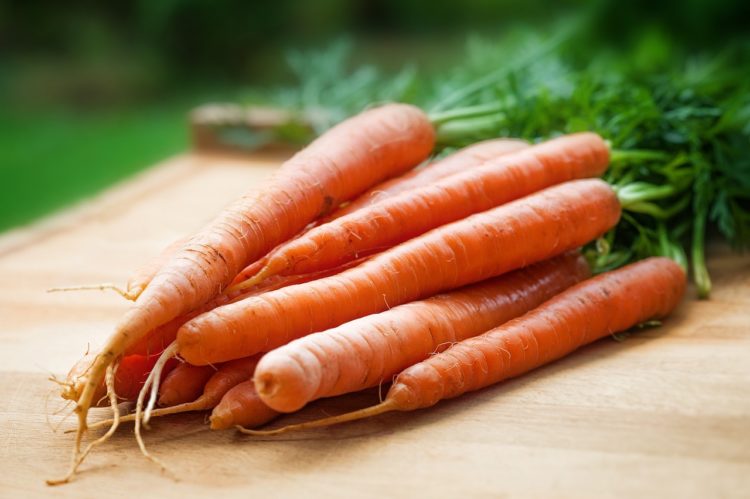
Image: Pexels from Pixabay
Flavour Profile: Sweet.
Key Health Benefits: Carrots contain antioxidant nutrients called carotenoids that help support vision, liver health and immunity, and they have anti-cancer properties.
Recipe to Try: Vegan Cashew Carrot Ginger Soup by Sondi Bruner (*Academy of Culinary Nutrition Head Program Coach)
Parsnips

Image: Ulrike Leone from Pixabay
Flavour Profile: Similar to carrots (they’re often called the blonde carrot), but a little earthier.
Key Health Benefits: In addition to its wealth of fibre and Vitamin C, parsnips contain potassium, an electrolyte mineral that keeps us hydrated and supports cardiovascular health.
Recipe to Try: Parsnip Cumin Soup by Jessica Mitton (*Culinary Nutrition Expert)
Sweet Potato

Image: Ella Olsson from UnSplash
Flavour Profile: Very sweet, candy-like when mashed or roasted.
Key Health Benefits: Sweet potatoes are considered a staple crop in many places because they contain so many nutrients, including carotenoids that support eye health, Vitamin C for immunity, anti-inflammatory compounds, and a wealth of antioxidants like anthocyanins. They are low glycemic, aid digestion and some research on animals show that they can even trigger digestive enzymes.
Recipe to Try: Sweet Potato Lentil Goulash by Candra Reynolds (*Culinary Nutrition Expert)
Beets
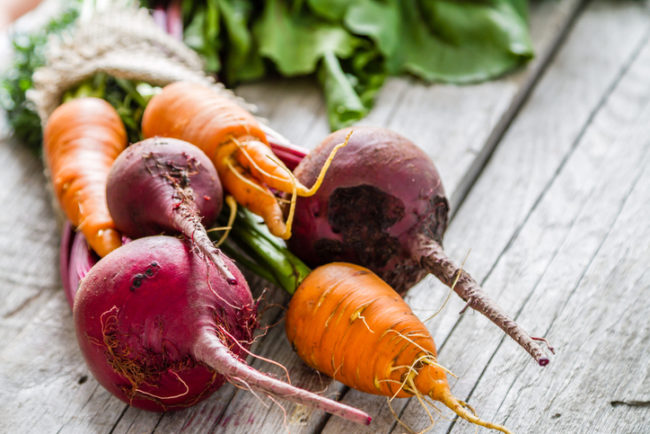
Image: iStock
Flavour Profile: Some describe beets as having a ‘dirt like’ flavour, but we find them very sweet.
Key Health Benefits: Beets contain betalain pigments, which are responsible for their bright colours and offer us anti-inflammatory, antioxidant and detoxifying health benefits. They are also helpful for PMS symptoms.
Recipe to Try: Golden Beet + Berry Salad by Jessica Pecush (*Culinary Nutrition Expert)
Celery Root (Celeriac)
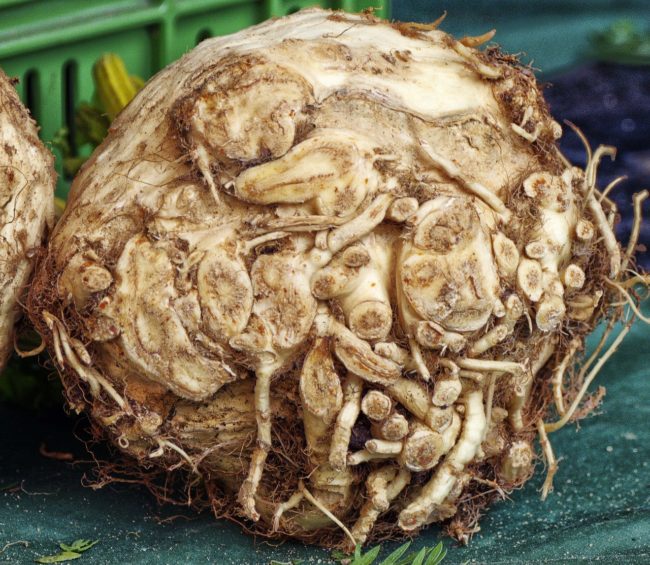
Image: Wolfgang Eckert from Pixabay
Flavour Profile: Celery-like, mild, sweet and nutty – some also describe it as having undertones of parsley.
Key Health Benefits: Celery root is a great source of Vitamin K, which supports our bone health and prevents blood clots.
Recipe to Try: Vegan Celery Root and Apple Soup by Meghan Telpner (*Academy of Culinary Nutrition Founder + Director)
Turnips
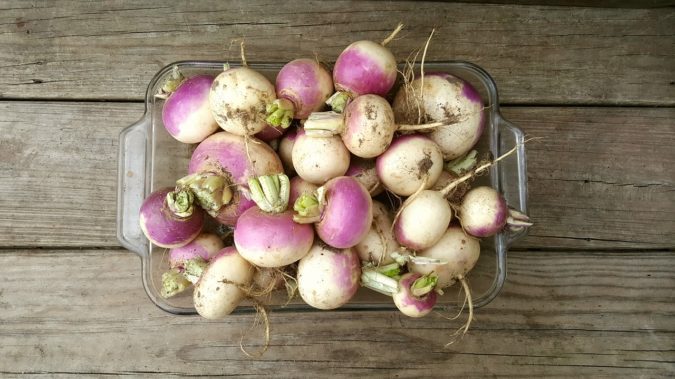
Image: bvoyles4 from Pixabay
Flavour Profile: Cabbage-like, slightly sweet, can be slightly bitter depending on the variety.
Key Health Benefits: Turnips are also a member of the cruciferous family, so they contain compounds called glucosinolates and isothiocyanates that have anti-tumor and anti-cancer properties, and help protect the liver and kidneys.
Recipe to Try: Roasted Turnips and Pears by It’s a Veg World After All
Kohlrabi
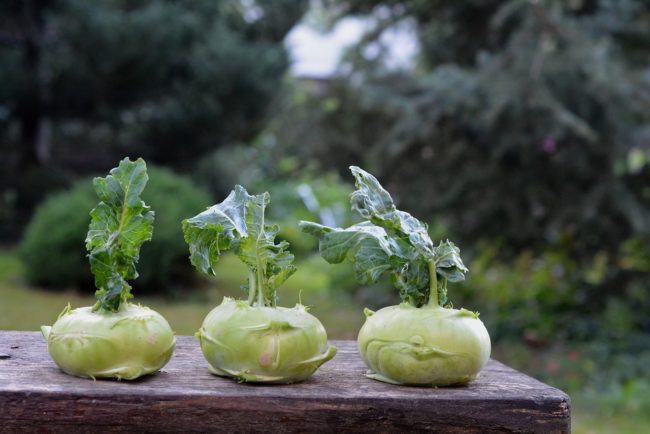
Image: utroja0 from Pixabay
Flavour Profile: Slightly sweet, cabbage-like and broccoli-like.
Key Health Benefits: Kohlrabi has anti-inflammatory and anti-diabetic properties, can help prevent colon and prostate cancer, and is rich in minerals like calcium, iron, potassium and magnesium.
Recipe to Try: Kohlrabi Fritters by Ful-Filled
Rutabaga
Flavour Profile: Rutabagas are a cross of cabbage and turnip, so they have a mild cabbage-turnip flavour.
Key Health Benefits: Rich in antioxidants and have a very strong ability to inhibit and destroy cancer cells.
Recipe to Try: Mashed Rutabaga with Spinach by Suzy Larsen (*Culinary Nutrition Expert)
Radish
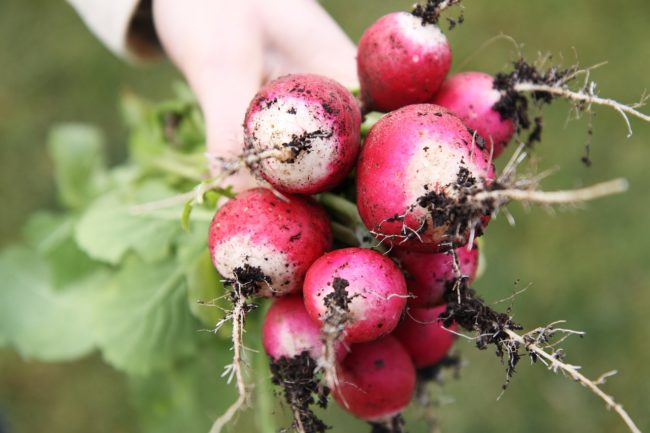
Image: PublicDomainPictures from Pixabay
Flavour Profile: It depends on the variety – they may be sharp and spicy, or mild and sweet.
Key Health Benefits: Anti-diabetic and anti-fungal properties, and they contain glucosinolates, which help to prevent cancer.
Recipe to Try: Rainbow Celebration Salad by Angela Simpson (*Culinary Nutrition Expert)
Potato

Image: Monica Grabkowska from UnSplash
Flavour Profile: Mild and creamy.
Key Health Benefits: Potatoes have been forsaken in the health world due to their higher glycemic index and because they are usually eaten as junk food (potato chips, French fries, etc.). Emerging research lauds potatoes for their vitamin and mineral content (especially B vitamins) and a specific carbohydrate called resistant starch, which can aid digestion by feeding the beneficial bacteria in the gut and help with sleep. Potatoes that have been boiled and cooled are higher in resistant starch.
Recipe to Try: Herbed Potato Salad by Cookie and Kate
Horseradish
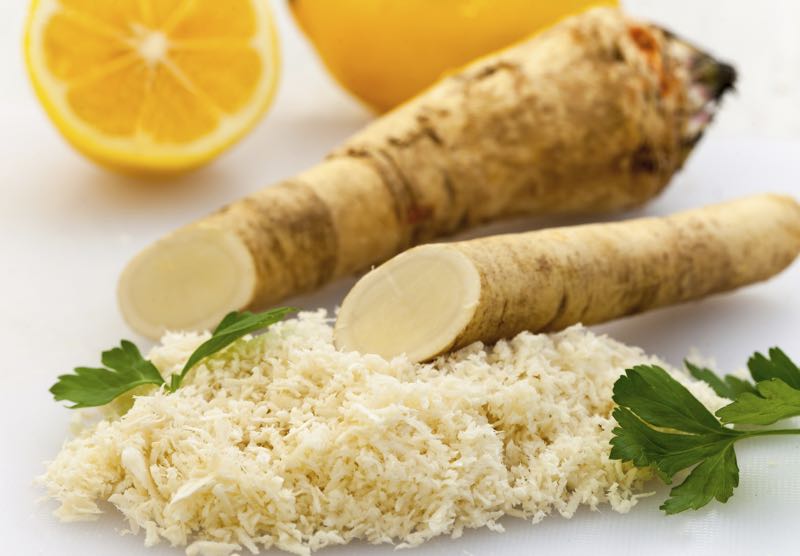
Image: iStock
Flavour Profile: Spicy and peppery.
Key Health Benefits: Highly anti-inflammatory, boosts circulation and blood flow, clears the sinuses and has anti-cancer properties due to its content of glucosinolates,
Recipe to Try: Fire Cider by Academy of Culinary Nutrition
Ginger

Flavour Profile: Spicy.
Key Health Benefits: Has anti-inflammatory compounds called gingerols, which are powerful compounds that block inflammation and settles the stomach and reduces nausea.
Recipe to Try: Energizing Pineapple Anti-Inflammatory Smoothie by Carla Matthews (*Culinary Nutrition Expert)
Onion and Garlic
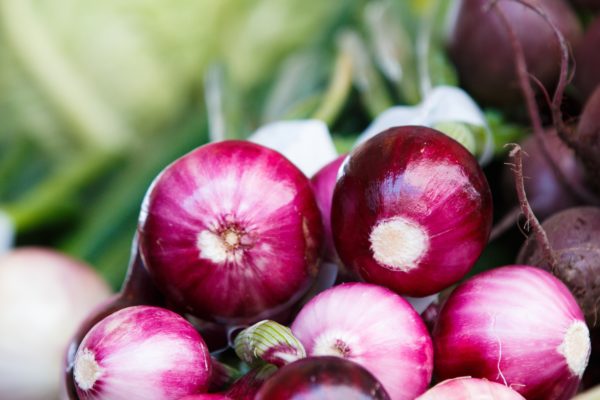
Image: Thomas Martinsen from Pixabay
Flavour Profile: Can be very pungent, bitter or spicy depending on the type of onions and garlic used – some onions like shallot or green onion are milder.
Key Health Benefits: Anti-viral and anti-bacterial, immune-boosting and anti-inflammatory.
Recipe to Try: Vegan Leek and Onion Frittata by Vancouver with Love
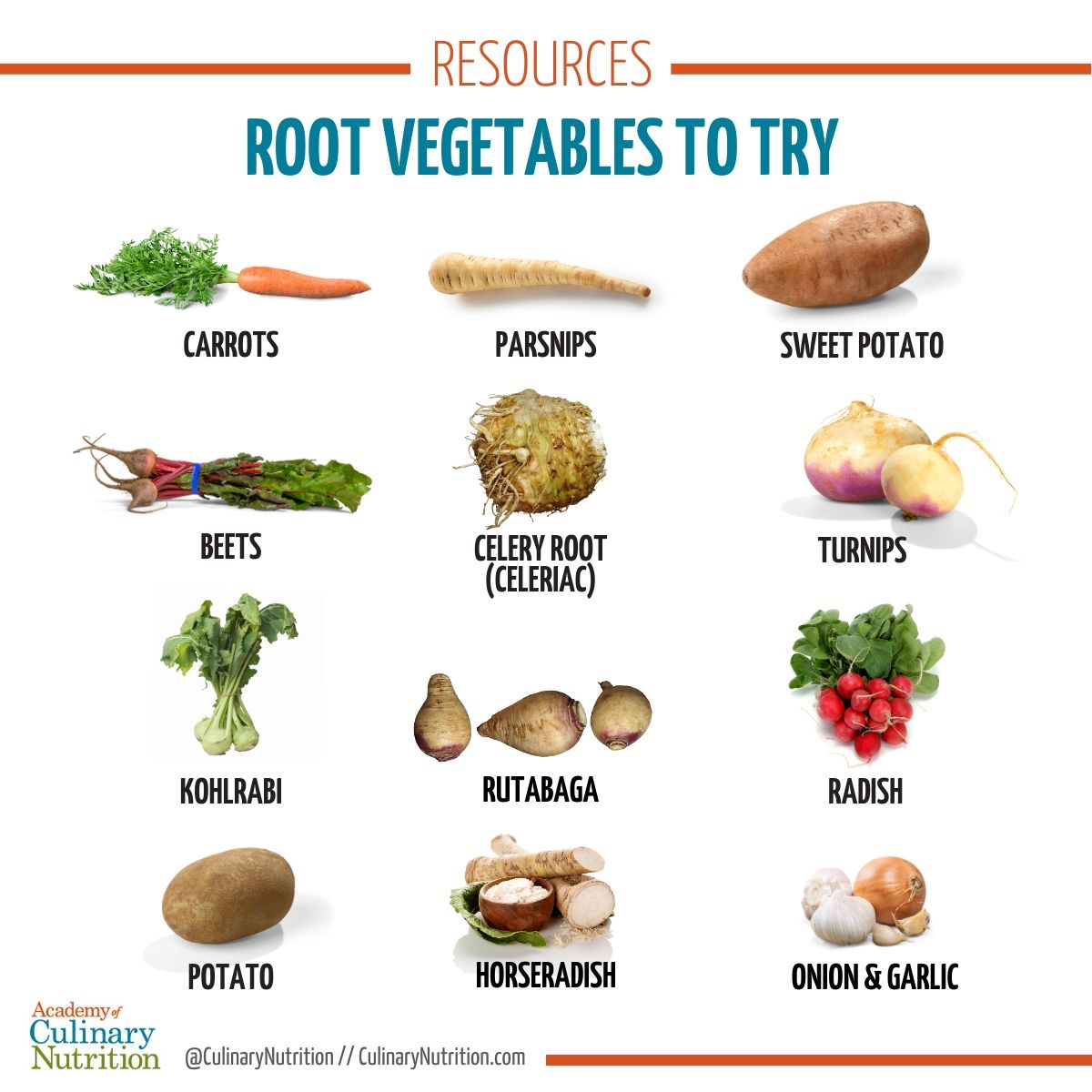
Image: iStock/carlosgaw
Free Resource Library
Enjoy more than 40 downloadable guides, recipes, and resources.

















